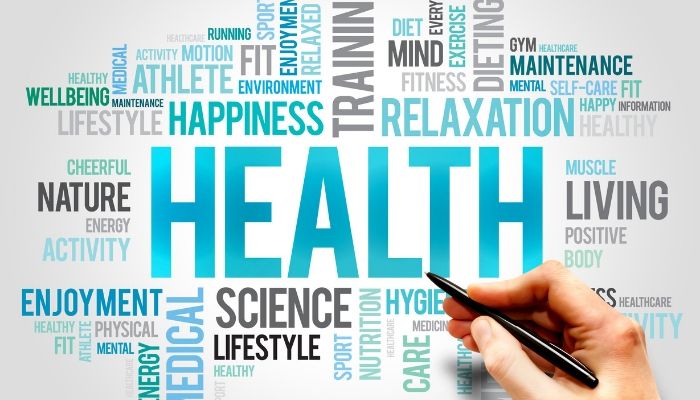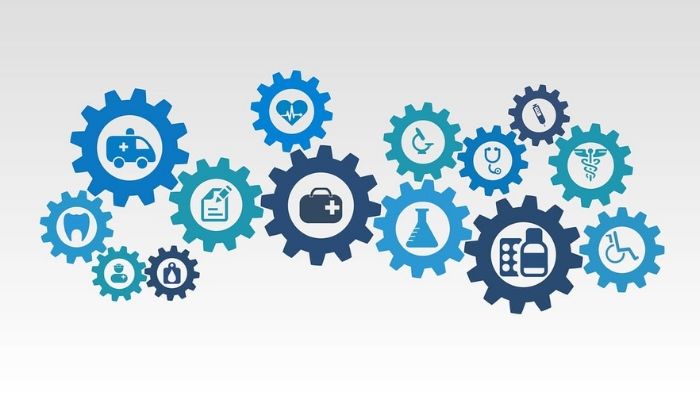Osteoporosis Treatment: It’s Not Just About Calcium
JANUARY 20, 2019 by DR. HEATHER MODAY, MD
Osteoporosis literally means “porous bone”. It is a state in which the density and quality of bone is reduced. As bones become more porous and fragile, the risk of fracture is greatly increased. This process occurs silently and progressively and often there are no symptoms until the first bone fracture occurs. And, it’s a big problem—over 50% of women and 13% of men over the age of 50 will break a bone due to osteoporosis.
Preventing osteoporosis is a catch 22. The ideal prevention strategy should begin decades before bone health screening actually begins (typically once a women reaches menopause). Why should it begin so early? If the bones have not reached peak density during our early lives (whether from suboptimal nutrition or other factors, the risk of fracture later is life is greatly increased).
The standard conventional medicine approach to osteoporosis is to give calcium and vitamin D supplements as well as one of the pharmacologic drugs such as bisphosphonates, hormone replacement therapy or estrogen receptor modulators. Unfortunately, adherence to these drugs is low, with 40% of women stopping medications within a year because of side effects such as rashes, esophagus and stomach ulcers and jaw bone decay to name a few. Worst of all, even when the regimen is followed, the effectiveness is poor. For example, with Fosamax, 99 people must be treated in order for a single person to decrease their fracture risk. Not a great track record!
Instead, functional medicine focuses on the factors that cause osteoporosis to frame the approach for both prevention and treatment.
Are You at Risk for Fragile Bones?
While 50% bone health is likely due to genetics—about 50% of it is due to other physical, environmental and nutritional factors. The top ten risk factors for fragile bones are:
- Low body weight
- Anorexia/ eating disorders
- Poor nutrition
- Smoking
- Excess alcohol use
- Inadequate exercise
- Family history
- Certain medications including corticosteroids
- Amenorrhea in women
- Celiac disease
Bone Density vs. Bone Quality: You Need Both!
Bone is living tissue that is constantly modeling and re-modeling throughout our lives. The health of bone is based not only on its mass but also on its density and architecture. In order to prevent osteoporosis or reduce the likelihood of fractures if there is already bone loss, we have to know what really goes on in the bone. Both bone density and bone quality must be considered to understand the full picture of bone health.
Bone density reaches its peak in mid–adulthood and decreases significantly after menopause when estrogen levels drop in women. Conventional medicine focuses solely on increasing bone density, however this does not mean the bone will not break. This is why bone density scans can be misleading— they emphasize only bone density when bone quality may still be low which also increases risk of fracture.
Bone remodeling is one factor in bone quality. Osteoclast cells digest and remove old mineralized bone and osteoblast cells lay down new bone matrix to be mineralized. This happens constantly and is regulated by many hormones. For example, when estrogen levels drop, osteoclast activity increases and more bone is broken down.
Nutrient deficiencies and inflammation can also cause too rapid bone turnover. Osteoblasts and osteoclasts are related to immune cells in our body and their activity can be turned on or off by inflammatory molecules. When there is more inflammation in the body (often from a gastrointestinal source), the bone resorbing cells (osteoclasts) are switched on causing more bone breakdown.
Regardless of the cause, when bone breakdown is faster than bone creation (more osteoclast activity than osteoblasts), bone quality suffers.
Tame Inflammation, Tame Osteoporosis
Osteoporosis is an inflammatory disease. Much research has shown how inflammation in the gut can turn on osteoclastic activity in the bones. Therefore, if you have bacterial or yeast overgrowth, food allergies, and intestinal permeability, the immune system sends out inflammatory molecules which starts this breakdown process. Overgrowth of bacteria in the intestines also blocks absorption of vitamins such as A, D, E, K and zinc amongst others, which are all necessary for bone health. Because of the intestinal malabsorption it causes, celiac disease is a huge risk factor for osteoporosis as well.
Excess oxidative stress is also a risk factor for bone loss. We are constantly exposed to free radicals from the toxins and pollutants in our environment. We also make free radicals ourselves as a by-product of our own bodies’ production of energy. These free radicals need to be squelched by anti-oxidants from our diets, or else they will cause tissue damage including increased bone loss. Therefore, an antioxidant rich diet and avoidance of alcohol and tobacco are crucial to protect bones from osteoporosis.
Acid/Base Balance & Your Bones
Bones are the mini storage organs for all our minerals. When our blood pH is more acidic, bones release minerals like potassium, calcium, and sodium to buffer the acidity. More acid states are common in people who eat excessive animal protein, excessive grains coupled with a lack of alkaline fruits and vegetables. Prolonged intense exercise without adequate recovery as well as airway diseases such as asthma, COPD, and sleep apnea can also cause acidosis of the blood because of lower oxygen saturation.
Hormones Role in Bone Health
Although we commonly think of estrogen as the main hormone involved in bone health, there are several others which are also quite important.
Thyroid:
Both hyper and hypo-thyroidism can have negative effects on bone health. In the case of hyperthyroidism, elevated thyroid hormone causes increased bone remodeling as well as increased loss of calcium in the urine, leading to lower bone mineral density and increased fracture risk. Reduced thyroid function has also been related to low bone mineral density in the hips and increased fracture risk.
Cortisol:
Cortisol is the hormone released from our adrenal glands in response to stress. Chronically elevated cortisol can cause fatty infiltration of bone marrow, low bone density, and increased risk of fracture. Another adrenal hormone called DHEA has opposite effect. DHEA is a precursor to both estrogen and testosterone. In women with low DHEA, supplementation can increase bone mineral density. In addition, moderate exercise/strength training will increase DHEA naturally.
Insulin:
Abnormal blood sugar control (even in non-diabetics) can lead to decreased osteoblast activity and infiltration of bone marrow with fat. This weakens bone. Diabetics have even higher risk of osteoporosis and higher rates of inflammation.
Estrogen:
Estrogen is a major regulator of bone remodeling in both men and women. It has many roles including activating vitamin D receptors in the gut, maintaining calcium balance in the body, and increasing osteoblastic activity. Use of hormone replacement therapy after menopause does slow bone loss, increases bone density, and reduces fracture rate but may not be suitable for all women. Bioidentical hormone therapy may be a safer option, but there are not enough large studies yet to evaluate this fully.
Testosterone:
There is also a link between low testosterone and reduced bone mineral density in both men and women. Testosterone also increases muscle mass and strength which protects bone and leads to decreased risk of falling.
Key Nutrients for Bone Health
1. Magnesium
Magnesium has many roles in the body. Magnesium and calcium function together, so deficiency of one markedly affects the metabolism of the other. In fact, increasing calcium supplementation without increasing magnesium supplementation can actually increase magnesium loss. Magnesium stimulates the thyroid’s production of calcitonin, which acts as a bone-preserving hormone. It also regulates parathyroid hormone, a function of which is to control bone breakdown in a number of ways. It is also necessary for the conversion of vitamin D into its active form.
2. Calcium
Almost all of the calcium in our body (99%) is stored in our bones and released into the blood through a complex array of hormones. Our body uses calcium for many other roles in the body so our bones are constantly releasing it into the blood stream when needed. Although it is an absolute necessary nutrient for bone health, extra calcium will not prevent bone fragility or fracture. Calcium is useless for bone strength unless we also have adequate stores of vitamin D, magnesium and vitamin K amongst others.
3. Vitamin K
Vitamin K is required for the synthesis of osteocalcin, the bone matrix upon which calcium crystallizes. Like a framework of a building, osteocalcin provides the structure and order to bone. Without it, bone would be fragile and easily broken. Vitamin K also helps calcium bind to this bone matrix. In essence, it serves as the “glue” that binds calcium onto the skeleton.
Just as vitamin K is central to bone formation, it also plays an important role in fracture healing. Vitamin K is not a single nutrient, but the name given to a group of vitamins of similar composition. The two main groups that occur naturally are K1, which is found in plant-based foods, particularly green leafy vegetables; and K2, which is produced by bacteria in fermented foods and to some minor extent in our GI tract. In combination with vitamin D and calcium, both vitamin K1 and K2 increase bone quality. However, vitamin K2 is more bioavailable, longer lasting, and provides a greater increase in bone strength.
4. Vitamin D
Vitamin D is actually a hormone which is created in our skin after exposure to UVB radiation from sunlight. It affects bone strength directly and indirectly by regulating calcium and phosphorus absorption in the body which are both important for bone health. Improved vitamin D levels increase muscles strength and balance and can reduce fracture risk independent of bone density.
Although exposure to sunlight for at least 30 minutes a day in the summer is typically adequate, it is impossible to get enough Vitamin D from sunlight during the winter season in the northern hemisphere. In the winter, it’s critical to either take a supplement or take in vitamin D fortified foods. Choose vitamin D3 (vitamin D2 is not well absorbed) and take enough to achieve a level of 40 ng/mL at minimum and between 50-60 if you have autoimmune disease or a high risk for osteoporosis or active osteoporosis.
There are other nutrients that are extremely important to bone health as well that play more minor roles such as boron, zinc, and vitamin C.
Recipe for Osteoporosis (and Fracture!) Prevention
Improving bone health is absolutely possible. These are the top 6 things that you must address in order to prevent osteoporosis and improve bone strength if you have already been diagnosed.
1.Eat a nutrient dense diet.
A whole foods diet that contains adequate protein (at least 1-1.5 grams of protein daily per kilogram of body weight) is a crucial first step. Protein should come from both animal and plant sources. Diets must include a plethora of alkalinizing fruits and vegetables and include foods high in zinc, magnesium, potassium, and calcium. Keep both sugar and grains to a minimum.
2. Supplement with bone building nutrients if you are not able to get them through your diet or if you already have osteoporosis.
Calcium should be in an easily absorbable form such as calcium citrate, glycinate, or malate. Aim to only take enough supplement to top off what you are getting from foods. Leafy greens such as kale, bok choy, and collards are high in calcium, as are soybeans, sesame, canned sardines and salmon, and dairy products. Aim for 1200 mg a day total coming from both foods and supplements.
If you are taking a calcium supplement, make sure to pair that with magnesium. Magnesium should be in glycinate, malate, or threonate form for best absorption. Also enjoy magnesium-rich foods including sunflower and sesame seeds, legumes, soy, avocado, beets, and dark chocolate.
Include food-based sources of both vitamin K1 and vitamin K2. K1 is found primarily in greens such as mustard, kale, collards, beets greens, and spinach. K2 is found in fermented foods such as Natto, ripe soft cheeses like brie, and yogurt. Taking a good probiotic and eating more fermented foods in general will also help produce more K2 in your gut.
Finally, expose your face, arms, and hands (without sunscreen!) to a broad spectrum light for 30 minutes daily for vitamin D. In the late fall through early spring, taking anywhere from 1000 iu to 5000 iu may be necessary to keep your vitamin D levels above 40 ng/mL. Vitamin D supplements should always be taken with a meal containing fat to facilitate better absorption.
3. Take care of your gut health
Inflammation in the gut sends messages generated by our own immune cells to shut off bone building cells and increase bone breakdown. Ensure your diet is rich in fiber and resistant starches to feed the gut microbiome. Have a small amount of fermented probiotic-rich foods every day. A broad spectrum probiotic can also be included for extra benefits. Also, make sure to avoid antibiotics unless you really need them. Non-steroidal anti-inflammatory and acid reducing medications should also be avoided.
4. Tame free radicals
Avoid smoking and second hand smoke. Avoid toxins in your home environment and beauty care. Reduce or eliminate alcohol, especially if you already have an osteoporosis diagnosis. Increase antioxidant rich foods like fruits and veggies paying particular attention to those rich in vitamin A and vitamin C.
5. Keep a healthy weight and muscle mass
Low caloric states such as anorexia as well as female athletes who stop menstruating are at great risk of osteopenia as they get older. Loss of menstruation is a low estrogen state which essentially mimics menopause to your bones. In addition, adding muscle to your frame through strength training will increase positive tension on your bones making them stronger. This is generally better than endurance training for women at risk for osteoporosis. Main muscle as it acts as a shield to the bone and is protective if there is a fall.
6. Check your hormones
Have your doctor run a hormone panel to make sure that your DHEA, testosterone, estrogen, and progesterone are within normal limits. In the case of cortisol, a 4-point cortisol test is necessary. To keep damage from high cortisol at bay, maintain a stress management practice such as meditation, yoga, or journaling to keep cortisol under control.
Osteoporosis is Preventable
Bone health is incredibly multifaceted but by following these recommendations, you have the best chance at keeping your bones in tip top shape for a happy, active life.





